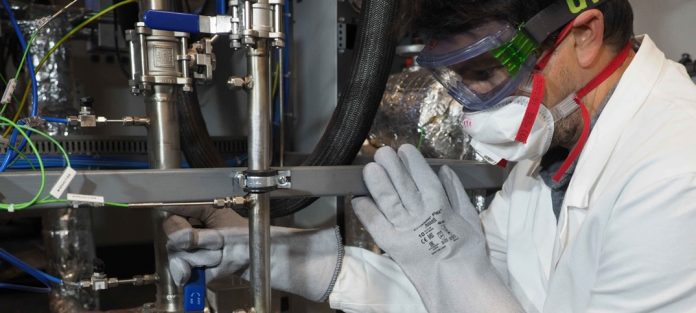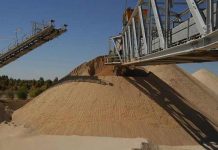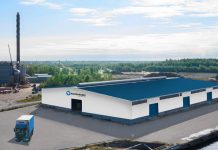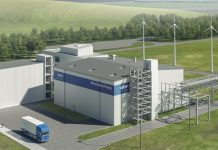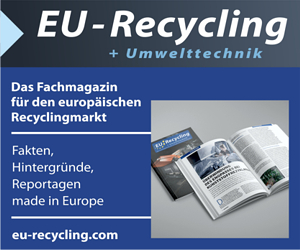A peerless project to recover phosphorus from sewage sludge is underway in the state of Baden-Württemberg.
The Abwasserzweckverband Staufener Bucht – the regional sewage board – has set out to build an incineration plant on the Rhine River in southern Baden. Unlike conventional plants, it will extract phosphorus on the fly, as sewage sludge is incinerated. Wehrle-Werk AG developed this promising recovery process with its research partner, the Centre for Solar Energy and Hydrogen Research Baden-Württemberg (ZSW), and will now roll it out in an industrial application. This new technology could make phosphorus recycling more efficient. If the one-megawatt pilot plant produces the results researchers hope to achieve, engineers could then retrofit other sewage sludge incinerators to recover phosphorous directly, without any further processing. Time is an issue for the organizations that operate sewage treatment plants: Phosphorous recovery will be mandatory for all large plants in Germany as of 2029. The State Ministry of the Environment and the EU are funding this project to the tune of 4.2 million euros.
Phosphorus is a crucial component of food and a key chemical in fertilizers. Companies mine phosphate rock to obtain phosphorous. Europe lacks such mines, so it has to import these minerals, the largest deposits of which are in North Africa. There is a risk of shortages if these supply lines are disrupted, which is why phosphorus recovery from wastewater streams is becoming more and more important. Sewage sludge is a prime source. As it stands, this sludge – which contains enough phosphorous to cover half of Germany’s demand – is usually incinerated without recovering any of the phosphorous in it.
Capturing phosphorus on the fly, as sewage sludge is incinerated
ZSW scientists have been helping the industry partner – Emmendingen-based Wehrle-Werk AG – develop a novel technology for recovering phosphorus from sewage sludge for several years now. Abwasserzweckverband Staufener Bucht recently tasked Wehrle to set up the P-XTract pilot plant to improve and test this technology for the first time in a real-world application. The P stands for phosphorus; Xtract is short for extraction.
Wehrle will set up this pilot system on the grounds of the Breisach-Grezhausen wastewater treatment plant just south of Freiburg to recover phosphorus from sewage sludge burned in a modified fluidized bed reactor. This project will have a fringe benefit: The seven treatment facilities taking part in this project are all in southern Baden. In the past, they had trucked their sludge to an incinerator in North Rhine-Westphalia. Those trips will no longer be necessary once this novel plant is up and running. The partners aim to optimize the fluidized bed reactor’s operations and the phosphorus recovery rate.
Several methods of recovering phosphorus from wastewater and sewage sludge have emerged since the mid-2000s. Most are complex and expensive. Some recover phosphorus while treating wastewater; others extract it from the ashes of incinerated sewage sludge. This newly developed method is more efficient. It extracts phosphorus as the incinerator burns the sewage sludge. Plant operators do not need to take any other steps or process the ashes further to recover the mineral. The premise for this technology is simple enough: Burning sewage sludge at around 900 degrees Celsius destroys practically all pollutants. And mixing in additives yields a recovered material that contains phosphorus and may be converted into granular fertilizers.
“We’re delighted to contribute to this process’s development up to the pilot scale and to see the technology tested under real-world conditions at the Breisach-Grezhausen plant,” says ZSW project manager Dr. Jochen Brellochs. “If that succeeds, then this technology can be deployed at new sites and integrated into legacy sewage sludge incineration plants.”
Applying and optimizing the tech in a one-megawatt plant
ZSW researchers and Wehrle’s R&D department have demonstrated the process’s technical feasibility at the institute’s test facility in Stuttgart. The ZSW draws on a deep well of expertise and experience in integrated phosphorus recovery and fluidized bed technology, and has the tools to analyze both.
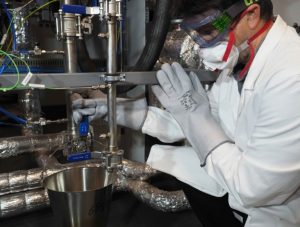
Integrated into the incinerating process, this technology enables decentralized phosphorus recovery. Applying the insights gained from its research plant, the ZSW is providing scientific support to help transfer this tech to the one-megawatt pilot plant at Grezhausen. The partners are not just scaling up the system; they also want to test further improvements to the process. “We will be working on making various adjustments. Improvements to the plant’s design should increase the phosphorous recovery rate to well over 80 percent. And new additives should further improve the bioavailability of recycled phosphorus for vegetable organisms,” says Brellochs. Another partner in the project, the Albert Ludwig University of Freiburg, is investigating how well vegetable organisms are able to use the resulting phosphorus product.
Mandatory recycling as of 2029
The timing of this tech’s transfer from the lab to the first largescale field trial is auspicious. Germany had amended its sewage sludge ordinance in October 2017 with a new provision effective 2029: Cities with more than 100,000 inhabitants will have to start recovering phosphorus when a kilogram of sewage sludge contains 20 or more grams of the mineral.
Source: ZSW


